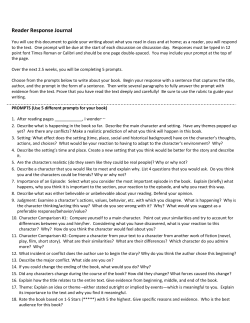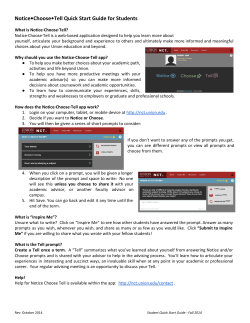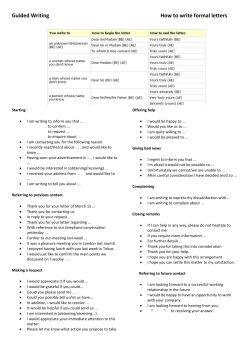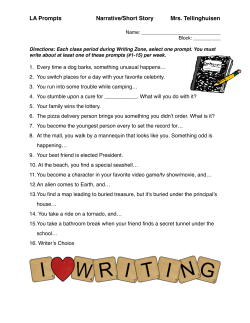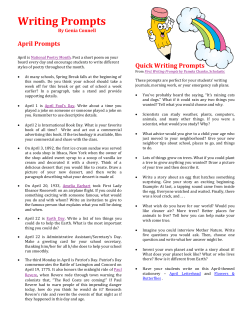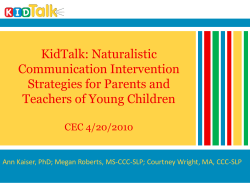
Prompting Hierarchy
PARTNER TEACHING STRATEGIES: PROMPTING HEIRARCHY ~description of strategies to assist skill development~ Prompting hierarchies provide a systematic method of assisting one how to learn and use new skills. There are two types of prompting hierarchies: “most-to-least” and “least-tomost.” Most-To-Least Prompting Sequence Most-to-Least prompting is used when introducing and initially teaching a skill. It is most helpful when a user requires explicit or direct instruction to learn or carry out a task. Full Physical Partial Physical Modeling Gesturing Verbal Independent Least-To-Most Prompting Sequence Least-to-Most prompting is used after the user learns the skill and is working towards mastery and independent use Independent Verbal Gesturing Modeling Partial Physical Full Physical Levels of Prompts Full Physical Assistance (FPA): Hand-over-hand assistance to complete the task Partial Physical Assistance (PPA): Partial physical assistance such as touching the hand to initiate the response and providing minimal physical guidance to get the desired response. Modeling (M): Showing the user what you want him/her to do without physically touching. Gesturing (G): Pointing, facial expression, mouthing words silently or indicating the physical movement you want him/her to do. Verbal Prompt (V): There are two types of verbal prompts: 1-is a direct statement of what to do or say. For example, “come here.” “put it in the trash.” Use of this level of prompt requires that the student understand the direction. 2-is an indirect statement that tells the student something about what is expected, but not exactly. For example, “What next?” “Where does it go?” Independent (I): Able to perform the task on his/her own, with no prompts or assistance. YAACK (1999). Prompting and prompt free strategies. Retrieved February 14, 2013 http://AAC.unl.edu/yaack/d3.html#d3b3 Additional references at http://rastresources.com
© Copyright 2025

